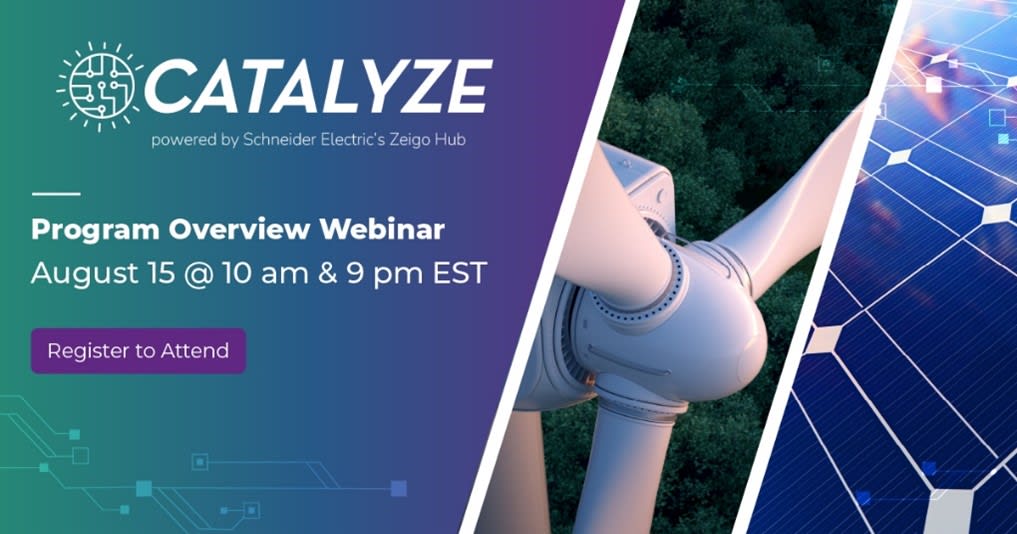3 Key Takeaways from Semicon West
 We're entering our Chip Era. This colloquial phrasing of the semiconductor segment, which makes vital components for the technologies we depend on, highlights how tiny chips are critical to the global economy. This year’s Semicon West focused on the growing global climate risks and the importance of collaboration for a stronger future. Keep reading to learn more about our top three key takeaways from the semiconductor segment’s largest conference.
We're entering our Chip Era. This colloquial phrasing of the semiconductor segment, which makes vital components for the technologies we depend on, highlights how tiny chips are critical to the global economy. This year’s Semicon West focused on the growing global climate risks and the importance of collaboration for a stronger future. Keep reading to learn more about our top three key takeaways from the semiconductor segment’s largest conference.
Global Opportunities from Industry Growth
Projected to become a trillion-dollar industry by 2030, the semiconductor industry stands at the cusp of a transformative era. The U.S. Under Secretary of Commerce shared significant progress on the CHIPS Act at Semicon West announcing the latest rounds of public and private investments, which now totals $300 billion. Prior to the CHIPS Act, the U.S. produced 0% of the world’s chips but the proposed investment will change the global landscape, bringing more than 20% of the world’s chips production to the U.S.
The unprecedented growth in AI-driven computing is anticipated to propel over 50% of the semiconductor market growth by 2029. A significant catalyst for this growth is AI-led data centers, which are expected to account for 30% of the energy consumption growth.
For context, the industry emitted a substantial 100 metric tons of carbon emissions1 in 2021 It’s projected that by 2030, semiconductor manufacturing will consume 237 TWh of electricity globally. To put that into perspective that’s more than Australia’s total consumption of electricity in 2021.
As the semiconductor segment is at the heart of this technological evolution, the industry faces an imperative to address the escalating energy challenge.
Challenges Ahead: Bracing for Evolving Global Risk
The semiconductor industry’s sustainability focus have become a necessity, with significant implications for near-term value and long-term viability. This shift is not just about ethics; it's about economics. According to S&P Global, major companies face up to $283 USD billion in carbon pricing costs and 13% earnings at risk by 2025. With increasing investor requirements and a notable shift in customer expectations, brands that positioned themselves as first movers in sustainability are witnessing up to 69% faster growth compared to their counterparts2. These dynamics underscore the immense value and competitive advantage that sustainability offers to those willing to lead.
The semiconductor supply chain, already complex and globally intertwined, is facing escalated business risks over the last few years. This has included global crises like the pandemic –projected in the trillion-dollar range–to localized geopolitical events and chronic climate-related weather events, costing tens of billions. Stakeholders are consequently ramping up pressure on companies to build resilience so they can anticipate and respond to disasters more effectively. Alongside this, there's a rising demand for increased disclosures of climate risks, driven by regulatory pressures with approximately 35 markets—including the EU, Hong Kong, New Zealand, and the UK—announcing climate-related disclosure requirements. Society's focus on climate action has intensified, with media attention, especially around conferences of parties (COP), further amplifying calls for robust climate strategies. This confluence of factors makes it imperative for the semiconductor industry to integrate sustainability into the core of their business models to mitigate risks and meet stakeholder expectations. These strategic initiatives are crucial for enabling net-zero goals, ensuring the semiconductor industry can thrive while positively contributing to the world staying on track to reaching the 1.5°C Paris Agreement.
Investing in Collaboration: Stronger Together
The theme of "stronger together" echoed powerfully at Semicon West, highlighting the indispensable role of collective effort to confront the sustainability challenges sparked by the industry’s rapid expansion. A recent SEMI study revealed that 83% of emissions from the semiconductor supply chain are associated with electricity usage3, making the shift towards low-carbon energy sources essential for reaching emission reduction goals. Therefore, the Catalyze program emerges as a beacon for companies eager to transition to renewable electricity.
John Powers, Vice President, Global Renewables and Carbon Advisory at Schneider Electric, contributed to two pivotal sessions, and spotlighted the strides made by the Catalyze program. Initiated by four founding sponsors, the program now celebrates the inclusion of Cisco among its ranks, bringing the total to seven. The growing consortium of Catalyze sponsors reflects a shared commitment to collaborate on decarbonizing the value chain. Any company that supplies to a program sponsor can join the Catalyze program and gain free access to renewable electricity education and procurement support.
To learn more about the Catalyze program and how it enables semiconductor industry suppliers to reduce greenhouse gas emissions through the transition to renewable electricity, register for this upcoming webinar on August 15, 2024..
The global opportunities emerging from the industry's expansion underscore the imperative to innovate and operate within the bounds of our environmental limits. Challenges stemming from escalating global risks highlight the urgency for embedding sustainability into the heart of business strategies. It was exciting to hear updates from the progress and collaboration across the working groups through the Semi Climate Consortium (SCC), and the sector is establishing foundational steps towards a more sustainable and resilient future. This, alongside exciting updates on innovations in cooling technologies, energy efficiency, and smart manufacturing, signals a collective march towards reducing semiconductor fabrication emissions, where energy has been cited as the greatest challenge.
In summary, the key takeaways from Semicon West offer both a roadmap and a call to action for the semiconductor industry. By harnessing innovation, embracing global collaboration, and committing to sustainability, the sector can navigate the challenges ahead and play a pivotal role in steering the global economy towards a more sustainable and resilient future.
References:
- Reported by the Semi Climate Consortium April 2024
- Reported growth by Unilever’s Sustainable Living Brands - https://www.unilever.com/news/press-and-media/press-releases/2019/unilevers-purpose-led-brands-outperform/
- SEMI Report – Transparency, Ambition and Collaboration: Advancing Climate Agenda of the Semiconductor Value Chain
